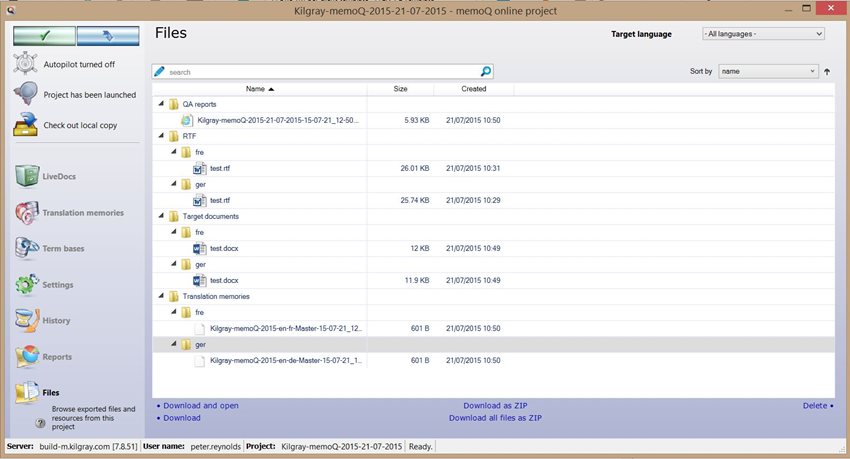memoQ 2015 build 50 has new functionality that lets you create a workflow task, which automatically exports a documents to a particular folder at different stages in the workflow. This minor release has also seen the addition of a new tab called “Files” for online memoQ projects. This shows the folders that contain files exported from memoQ. In this blog post I will take you through a case study of how this can be used in practice.
Scenario
You are a project manager working for an LSP. Your client has an in house review process and would like a two-column RTF file for this review. At the end of the project they also want a QA report and translation memories delivered to them.
Solution
Prior to memoQ 2015 build 50 you would have had to manually export everything. Each project you did for this client would have required some extra work for you to export the translation memories, QA reports or other documents. With the new release, this can all be done automatically through project templates.
Creating the template
Project templates are to be found in the memoQ resource console. We start by creating a new online project template. We will then edit this template. In the “Name and languages” tab shown below I have entered the client name as always being “Kilgray” and made the “Project name” a combination of “{Client}-{Project}-{DD}-{MM}-{YYYY}”. So if the project is called “memoQ-2015” and the date is 28th June 2015, the full project name will be “Kilgray-memoQ-2015-28-07-2015”.
We have also decided that for this client the source language will always be English but we do not know what the target language will be until the project is submitted.

We add a LiveDocs corpus.
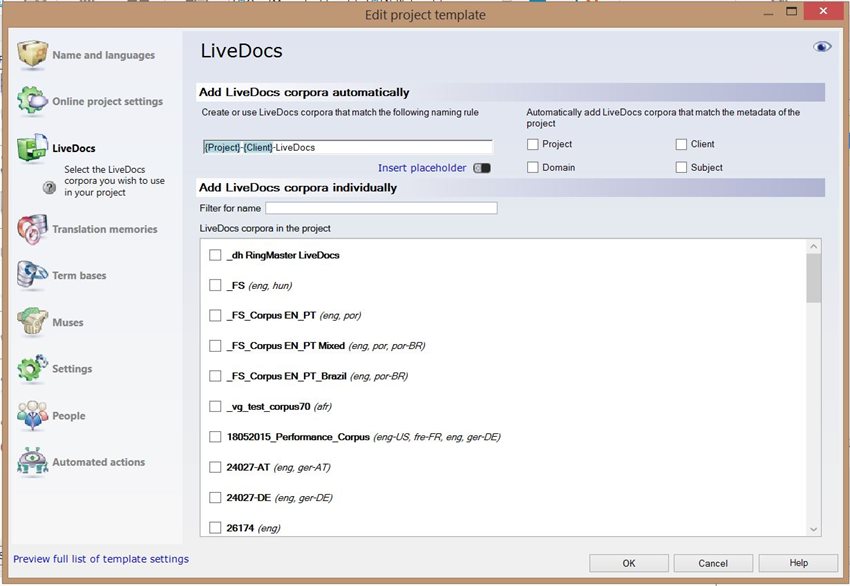
We add master and working translation memories.
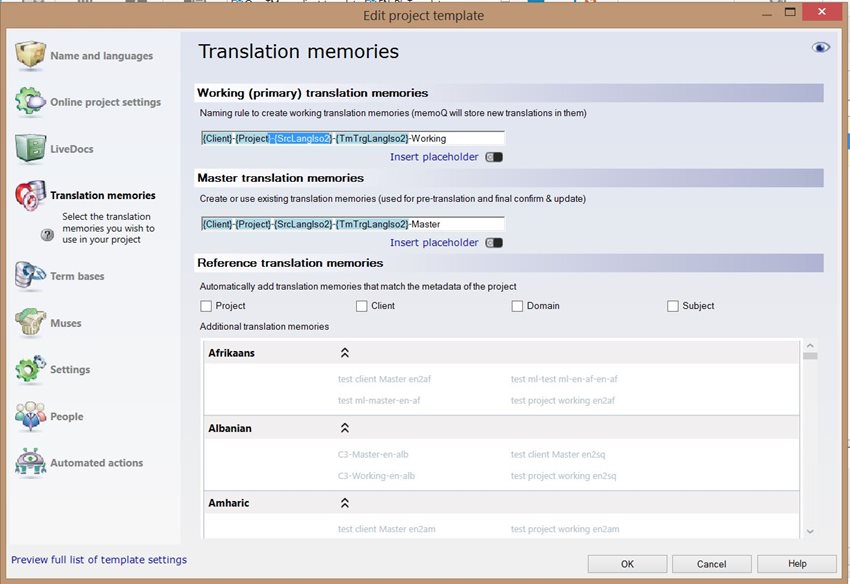
In addition to these, we also add a term base and assign French and German translators to the project.
Configuring the automated actions
We now add actions so that files will be exported automatically.
When the translator delivers the document we want to export a two-column RTF document which will be used by the client for their review. We select “Translator delivers document” from the list of available triggers
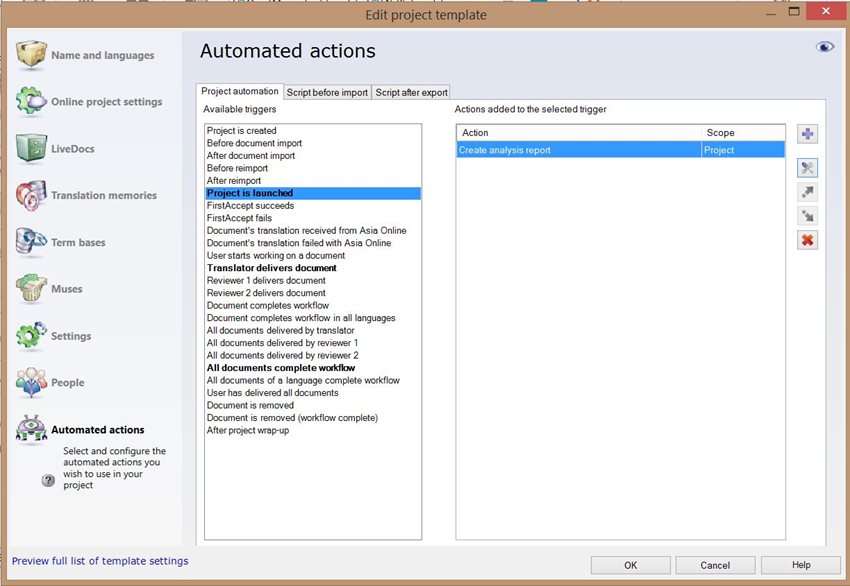
When selecting the plus button to the right of the column for “Actions added to the selected trigger”, a dialog box with a list of available actions opens and we select “Export two-column RTF on server”.
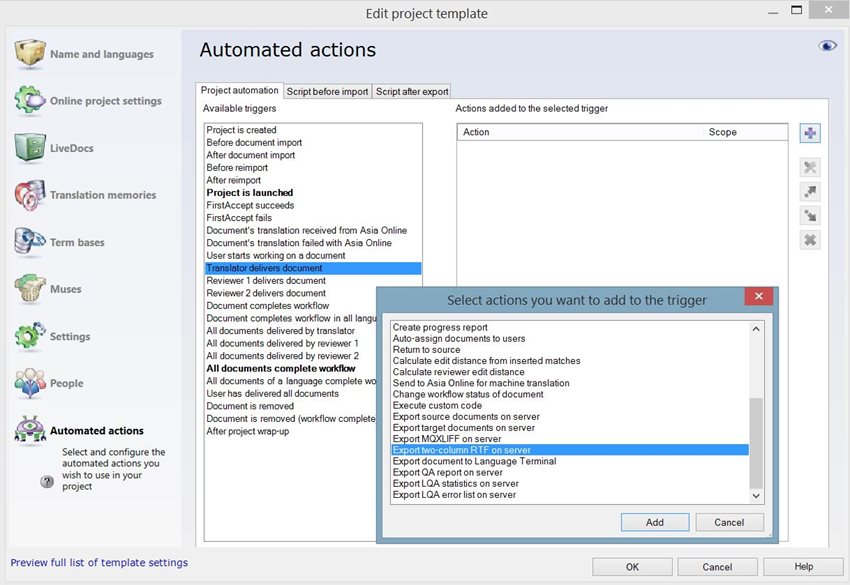
We will then be given some choices as to that we want in the two-column RTF document. We decide to accept the default settings.
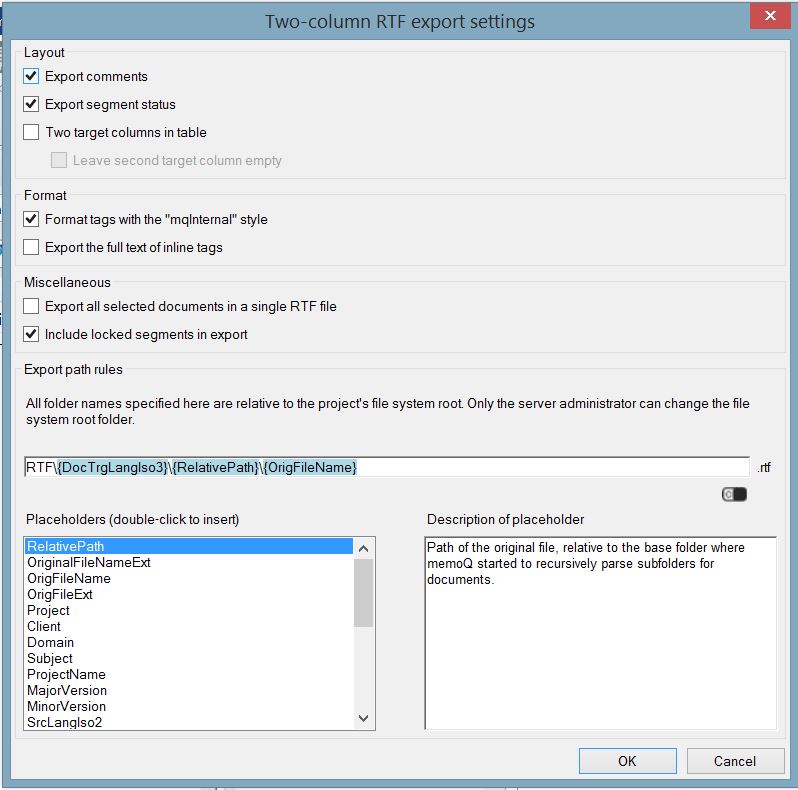
At the end of the process we will want to automatically export the final document. We select “All documents complete workflow” as the available trigger and “Export documents on server” as the action.
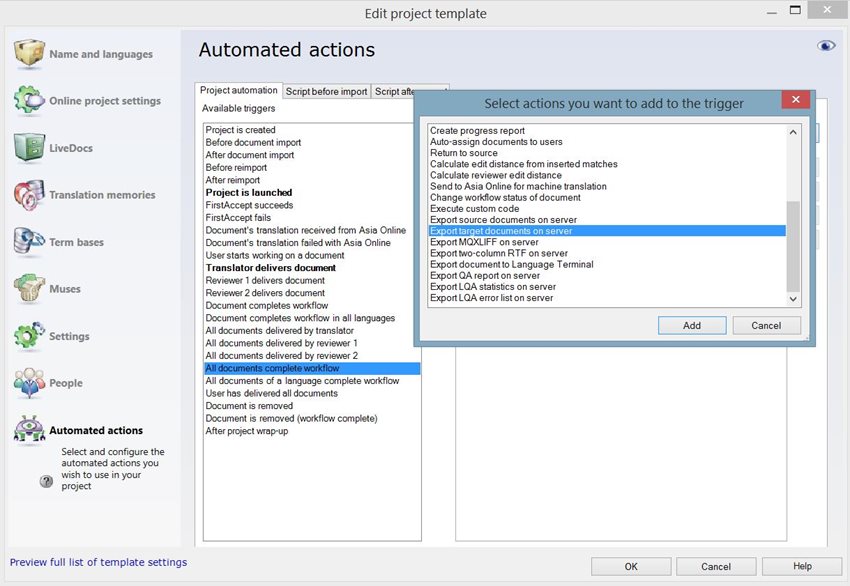
The client also wants the QA report and the translation memories. To export the QA report we select the final trigger “After project wrap-up” and select “Export QA report on server”.
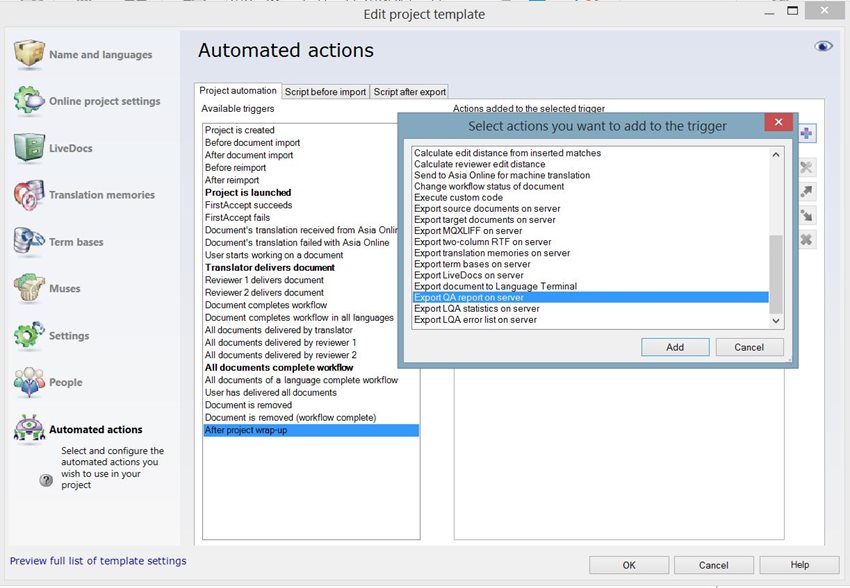
We have decided to stick with the default folder names here too.

We then select the final trigger “After project wrap-up” again and select “Export translation memories on server”.
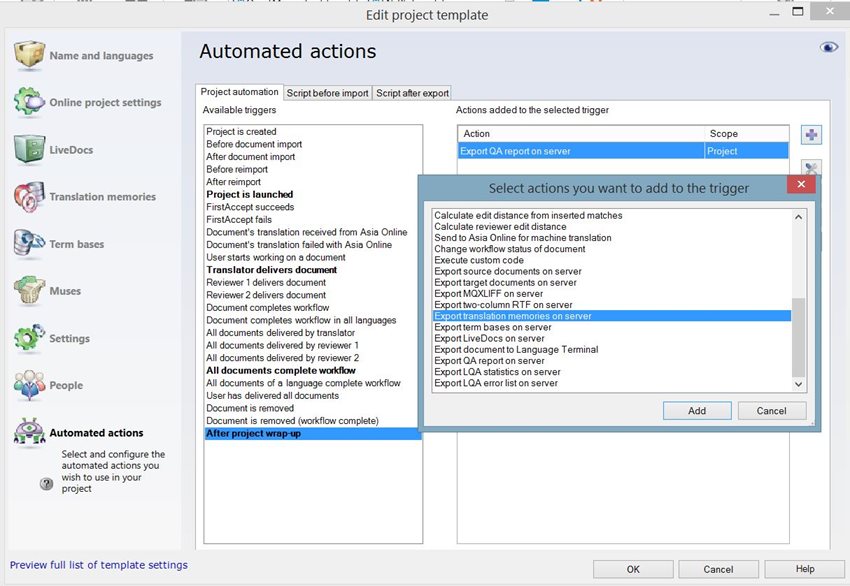
We have decided in this to export the master translation memories only.
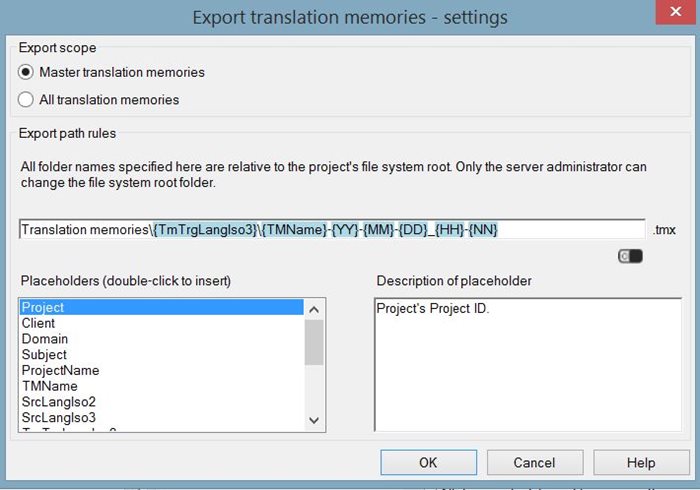
The project
Now we have created the template we want to use. We select “New online project from template”.
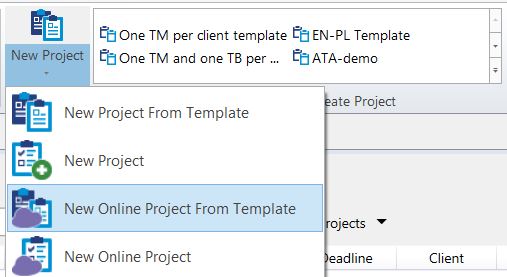
We select the files we want to work on. Then click on next. In this dialog the name of the client is already there. We enter the name of the project and the target languages. Then select finish.
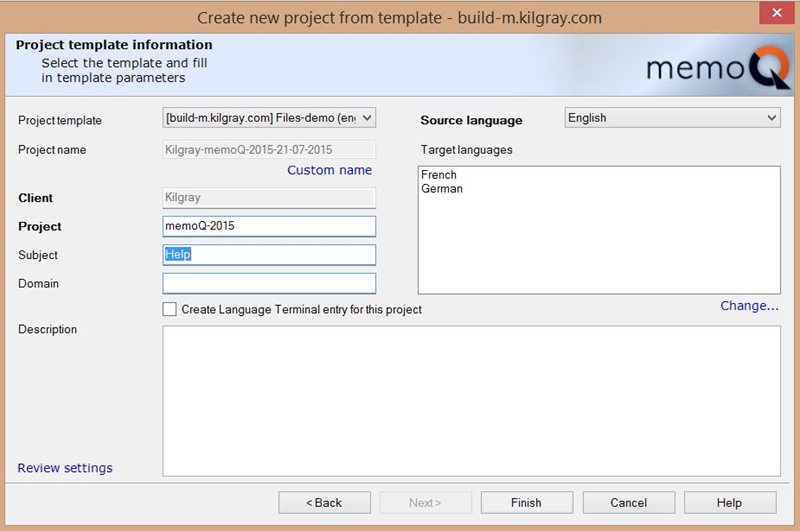
The project then opens for us to manage it. We assign the translators and reviewers. The translators and reviewers then work on the project. In this case they used the browser based version of memoQ.

After the translators have delivered their work memoQ will automatically export a two-column RTF file which can be sent to the client for their review.
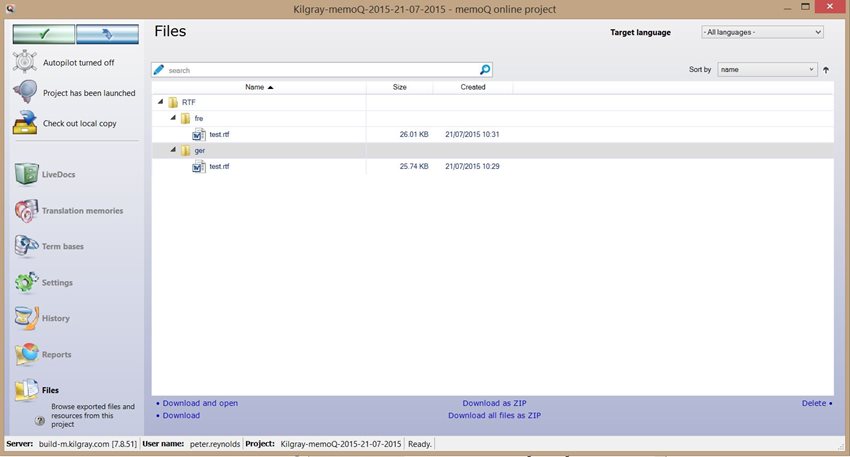
Changes made in the client review are then made on the project files and the review is completed.
At this stage the translated target documents will be exported. We then open the project and in the translations tab we select “Wrap up”. The project is now complete and the translation memories and QA reports are exported. Below you can see the files tab with all the documents which have been exported automatically.
